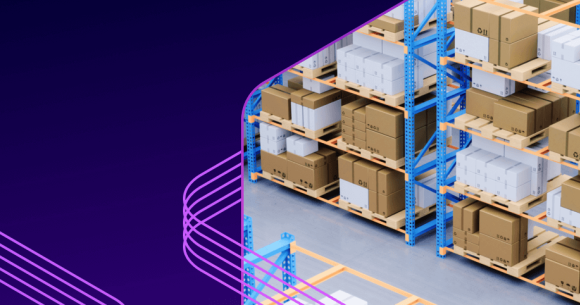Review From A Customer
Michael Roberts Capacity Manager at CDL Limited, Verified by IT Central Station
What is our primary use case?
The primary use case is to assist me in my role as capacity manager. It assists in capacity planning across our company. We use it to ensure that we've got enough capacity to meet future demand from the business perspective: new customers come on board and existing customers are growing.
But it's also to make sure we're getting the best out of the IT resources that we have. We need to make sure that the estate is right-sized and that we're not wasting money or efficiency by having an incorrectly sized estate.
How has it helped my organization?
A good example of how this solution has improved the way our company functions is Christmas. Christmas is our busiest trading period, as we see an increase in traffic, from Christmas day until the end of January. Using the machine-learning-driven alerts in Capacity Planner has helped us plan and catch errors before they become service-affecting. We've been able to stand up to the extra demand.
What is most valuable?
The Forward Thinking scenario modeling is the most valuable feature. Using the tool, we've been able to model new demands on our systems and identify where bottlenecks will occur. We've been able to proactively address those issues and fix them before they become service-affecting.
What needs improvement?
There is room for improvement on the reporting side of the product. The reports are perfectly serviceable and they give us the information that we need, but they can be a bit old-fashioned to look at. ITRS has acknowledged this — we've got a good relationship with them — and they're looking to make improvements and move more to real-time dashboards.
The other thing that I don't particularly like about the current reports is that you can't save parameters. Every time you run a report you have to go through and reselect all the parameters that you want in that report.
It would also be helpful for me if I could manage some elements of the system myself, a bit more. At the moment, if we want to have a new user and assign a license to that user on the system, we have to raise a ticket with their support desk. I would much prefer to be able to have a control panel where I can add people and assign licenses, just to speed up processes.
For how long have I used the solution?
Officially, we've been using ITRS Capacity Planner since August 2018. That's when we signed the contract. However, we started with a proof of concept trial in January 2018.
What do I think about the stability of the solution?
The stability has been absolutely first-class. We've had a few minor issues in terms of overnight baseline processing, but I can't remember a time, in all the time we've been using the product, where the solution has been unavailable.
What do I think about the scalabilty of the solution?
It has scaled well. We've added additional services over a period of months. We've got a fairly sizable VMware estate at CDL and it copes easily.
We've had a small problem in terms of data collection from VMware, because we've got so much data. We've had to run more data collection runs than a typical customer would. But the vendor was really knowledgeable in helping us set up the timing so those jobs would run successfully.
We've got plans to roll out the solution to some of our other domains that run some of our specific services for clients so that we can increase the stability of those services in the way that we have with our core estate. About 75 percent of our entire estate is covered at the moment, and we're looking to roll it out to the remaining 25 percent of the estate during this financial year.
How are customer service and technical support?
The technical support is really good. When we do have a problem they're fast to respond.
We raise tickets through their service desk and they get triaged by first-line support. Then they get passed through to the Capacity Planner team and they're normally good at being able to provide us with a solution to the issue. And if they can't provide a solution there and then, they're generally adept at getting us a workaround that isn't too onerous, something we can use while we're waiting for the development team to fix a software bug or the like.
They do seem really knowledgeable about the product, which is good.
ITRS is also very responsive when it comes to including our requests within future releases. We've built up a true partnership with them, so they're doing some work for us that would benefit the product as a whole, moving forward. We've provided a number of ideas and enhancement requests directly to their management team. I have a relationship with the head of product design. We've also met the sales directors. We've already had a number of our requests released and there are others on the product roadmap awaiting release this year.
We've set up a Capacity forum where I, and some other customers, have an informal chat, not just about the product but about capacity issues in general, and how we overcome challenges. While ITRS introduced us, it's actually run separately from ITRS. We schedule the call among ourselves, and we do that without ITRS being present, so we can speak freely about the product.
Which solution did I use previously and why did I switch?
For us, ServiceNow is our primary ITSM tool, so every system that we buy has to be able to communicate with it. That was a key requirement. And at the time, Capacity Planner was the only tool on the market that met that requirement.
Capacity Planner has two ServiceNow modules. One of them pulls data out of the CMDB in ServiceNow and pushes it into Capacity Planner to enrich Capacity Planner. That gives us that business services view I mentioned earlier. If we make a change to a business service, Capacity Planner reports automatically reflect that.
And the other module in ServiceNow is Predict Events. Capacity Planner will raise an alert in Capacity Planner, proactively, about events. For example, if there is an alert that a certain server is going to run out of disk space in three weeks' time, that will also raise the alert in ServiceNow. Our engineers can deal with it as a traditional ticket and be proactive before it becomes service-affecting. That was key for us.
How was the initial setup?
The initial setup was relatively straight forward from our perspective. There was only one machine that we had to deploy on-prem, a VM, and that talks to our VMware solution and to our other monitoring environments to get the data. It then transmits that to ITRS.
To get the product up and running took about a week. But then we had to wait for the data to be collected and go up to the cloud, for it to be able to do trend analysis. So realistically, it was about a month before we started getting any use out of the tool. We started with a very narrow scope of our business services, and over the months since we've been adding different business services as we've gone along. To get to the point where we are today, it's taken eight months to a year.
We like to take a view of business services. We identified what we would class as our key, strategic business services, and focused on getting the data around those services. Because Capacity Planner is obviously not a monitoring tool in its own right, we take data from other monitoring tools. We focused on where we were going to get data from for those business services. That led us to getting data from Dynatrace, from Solar-Winds, and from VMware. We looked at which business services we were going to get data out of from Grafana, Graphite, and the ELK stack. We started with our biggest, most valuable services, in terms of number of customers and importance.
What about the implementation team?
We did the deployment, working with the vendor.
What was our ROI?
We have seen ROI using ITRS, although it's hard to quantify as one measure is the number of outages that we've prevented proactively.
The other ROI is obviously in terms of right-sizing in the estate. We've been able to run more VMs on our estate by right-sizing the capacity on those hosts.
What's my experience with pricing, setup cost, and licensing?
In addition to the standard licensing fees, we've got managed services for some elements of our business applications. When we come to onboard some of the new business metrics, anything outside of the managed service does incur consultancy costs.
They're usually good at telling us beforehand that a piece of work will take five days, or however long it will take.
Which other solutions did I evaluate?
Once I started in my role here we did look at all the tools that were on the market. There's one called Athene by Syncsort and BMC has a product as well.
At the time, Syncsort Athene was definitely on-prem only. They were just about to release a SaaS product, but it was not very feature-rich compared to the on-prem version. So we discounted that. The BMC version was also SaaS, if I recall correctly.
The reason we decided to go with ITRS was that the other two solutions were just products, as in you buy licensing for the product and that is that. You plug them in and you get data and it is left to you to interpret that data. What we liked about ITRS' solution was the managed service element of it. With ITRS, we have access to data scientists and we can ask questions about correlations of data. They will help us with recommendations for the system and the network, based on their experience as data scientists. That was the main differentiator between ITRS and the other companies. It's more than just software on its own, it's all the services that they provide around that tool.
Download the customer case study (pdf) here.




